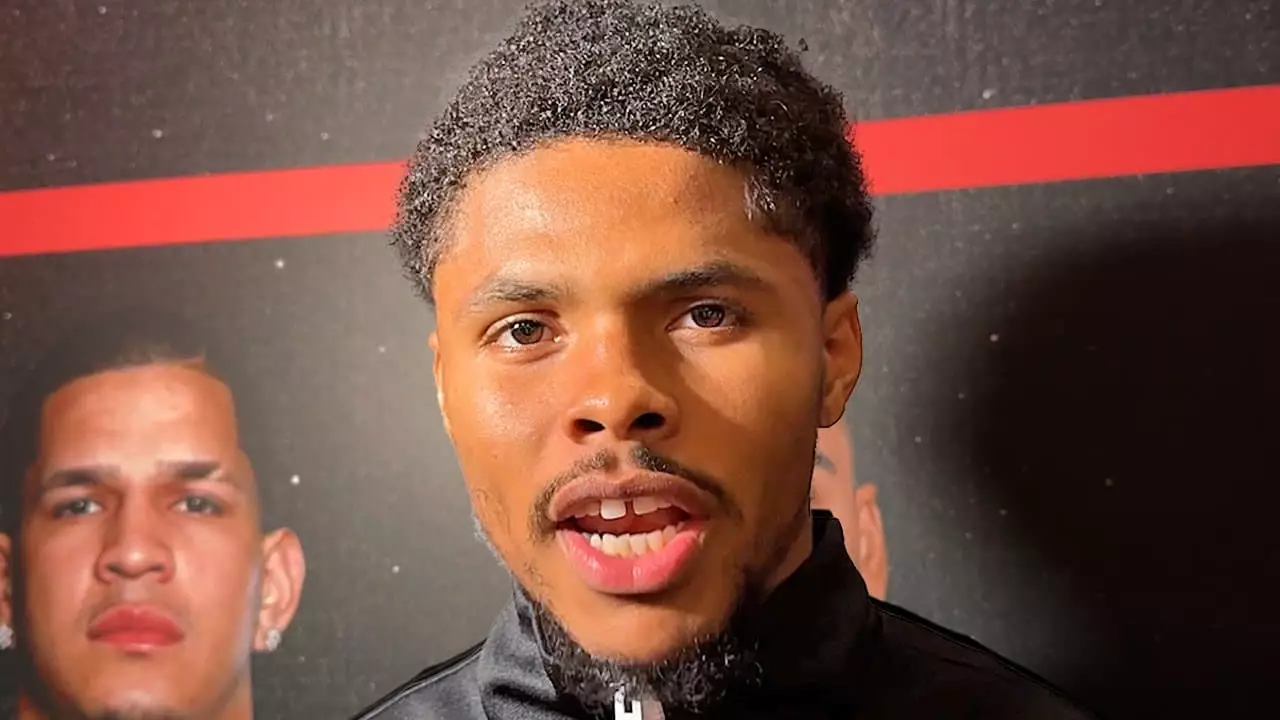Shakur Stevenson’s recent declaration to “shine” during his upcoming lightweight title defense exemplifies a fighter who refuses to shy away from the spotlight. His declaration is not mere bravado but a testament to his relentless commitment to excellence. Stevenson’s confidence radiates beyond words — it underscores a clear understanding of his own capabilities and a drive to elevate his stature in the boxing world. His declaration to “fight my fight” reveals a strategic mindset rooted in artistry, where movement and defense take precedence over reckless aggression. It’s a statement of intent that positions him firmly on the ascent, determined to showcase a style that has, for now, set him apart from his peers.
Facing Reality: Style, Strength, and the Challenge of a Volume Puncher
However, beneath this confident exterior lies a complex reality. Stevenson’s approach, characterized by elusive movement and calculated defense, may be his greatest strength but also a potential Achilles’ heel against fighters like William Zepeda. Zepeda (33-0, 27 KOs) epitomizes relentless aggression and volume punching, an intimidating force that erodes opponents’ stamina and resilience. Historically, fighters who rely predominantly on movement and counterpunching risk becoming predictable and vulnerable when faced with fighters who can absorb and fire back in volume.
It’s naive to dismiss Zepeda’s offensive pressure as merely speculation; his track record speaks volumes. For Stevenson, this isn’t just about technical finesse but about confronting an opponent who may turn his stylistic principles into a difficult maze where his movement alone might not suffice. The danger isn’t just in Zepeda’s punches but in the potential to be overwhelmed if Stevenson’s elusive tactics are neutralized. This fight could serve as a litmus test for whether a defensive maestro can truly adapt under duress or if his style is ultimately susceptible to attrition and volume.
Questioning the Path to Greatness: Matchmaking and the Hype Machine
Stevenson’s career trajectory and the opposition he’s faced thus far have sparked widespread debate. Critics argue that his matchups — against fighters like Josh Padley, Artem Harutyunyan, and Shuichiro Yoshino — were designed to build his reputation rather than truly challenge his skills. This pattern fuels skepticism about whether Stevenson is genuinely the “next Mayweather” or simply riding a carefully curated hype train. The comparison to past fighters who were propped up as the ‘future’ fails to hold, especially if subsequent performances reveal vulnerabilities.
The narrative around Stevenson’s rise might be influenced heavily by promotional strategies, with some fans and analysts questioning whether he’s being protected or prepared in a way that obscures his true potential. This scrutiny isn’t unfounded; it’s a reflection of a larger trend seen in boxing where hype often outpaces actual skill or readiness. If Stevenson falls short against Zepeda, those doubts will only intensify, turning him from a rising star into an optical illusion of greatness.
The Struggle for Identity: Defensive Style Versus Power and Competitiveness
Stevenson’s boxing philosophy appears steadfast — a preference for movement over power, a defensive approach over outright confrontation. While this can create memorable fights and endear him to fans who admire technical mastery, it also magnifies vulnerabilities. His recent encounters have demonstrated that he can be caught, especially when pressed in the pocket, revealing a notable deficieny: his susceptibility to body shots and a lack of knockout power at lightweight.
His resistance to change, showcasing unwavering commitment to his style, could prove detrimental when faced with opponents who are willing to match his speed with relentless pressure. His acknowledgment that he might not be the toughest or most capable in a brawl suggests a need to evolve if he truly aims to dominate the division. Simply put, a fighter solely reliant on elusive movement and defensive tactics may struggle against robust, volume punchers who don’t give him room to breathe.
Challenging the Myth: Can a Defensive Mastermind Truly Conquer the Heavy Hitter?
The question that lingers in the wake of Stevenson’s confident proclamations is whether his style can withstand the inevitable. History has shown that fighters who lean heavily on defense and movement often find themselves at the mercy of volume punchers and relentless pressure. The challenge is formidable: to maintain his identity without becoming predictable, and yet, evolve enough to withstand the onslaught of fighters like Zepeda.
In boxing, the line between genius and vulnerability is razor-thin. Stevenson’s journey is not simply about defending his title but about proving that he can adapt, grow, and rise above the limitations that his current style may impose. His future victories or setbacks will ultimately test whether he is a true innovator or merely riding a reputation built on a style that could become outdated as the division demands more power, more resilience, and unyielding adaptability.

